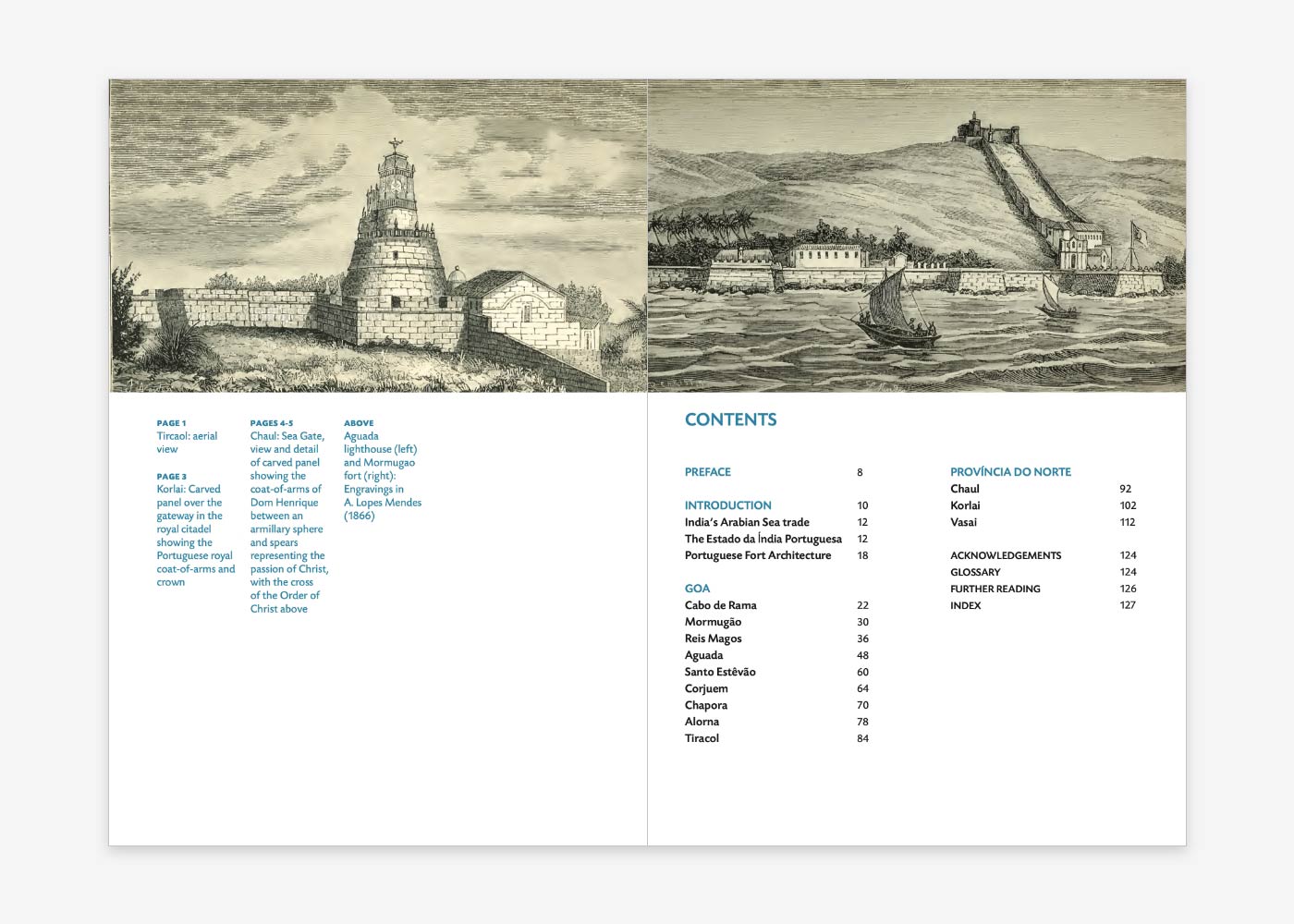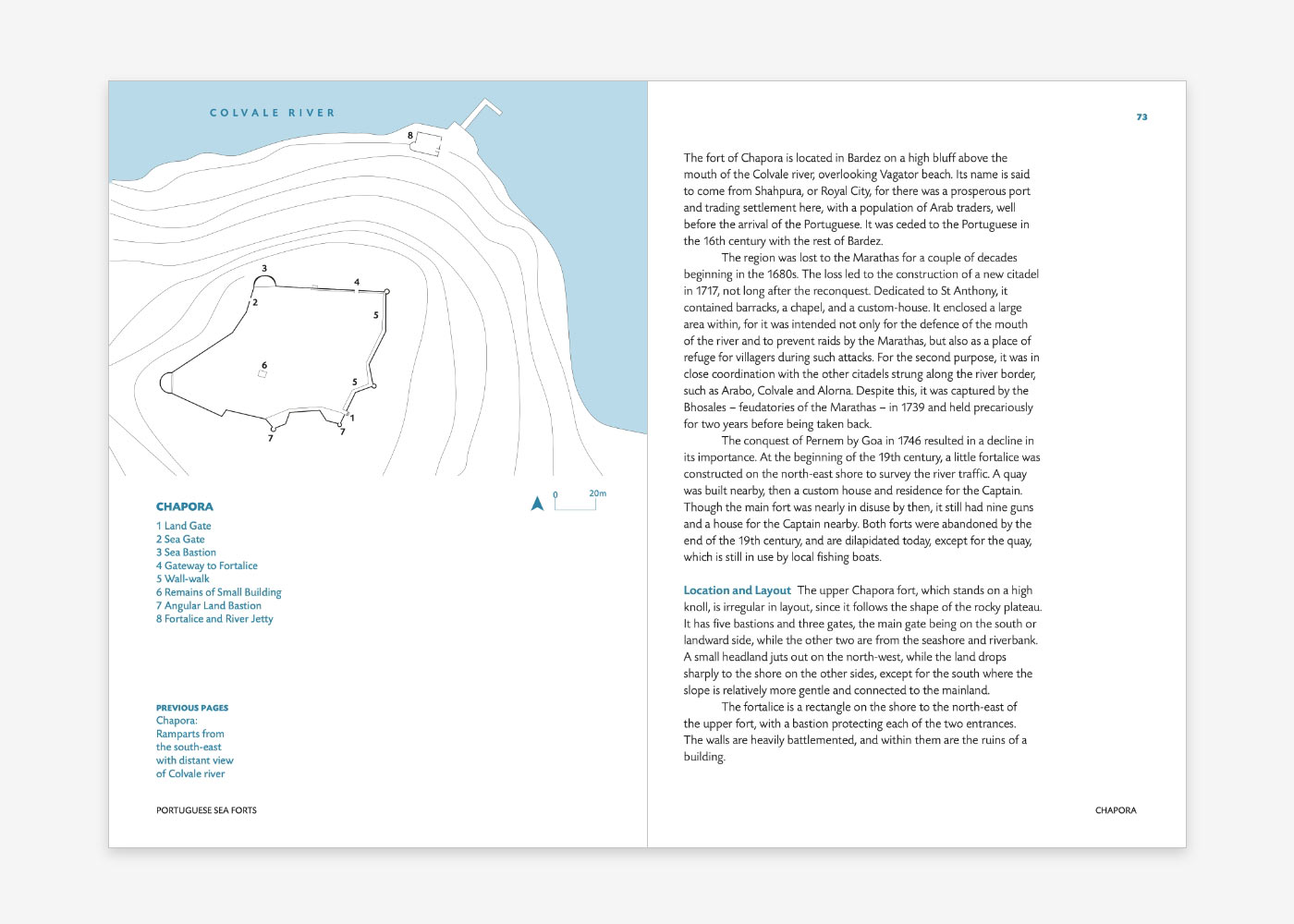Portuguese Sea Forts – Goa with Chaul, Korlai and Vasai
Guidebooks
The Portuguese presence on the Arabian Sea coast of the Deccan dates from the beginning of the sixteenth century, with the establishment of Goa as the capital of a rapidly expanding maritime enterprise that eventually encompassed much of Asia. In order to protect the ships carrying their goods, merchants, troops and missionaries to India, the Portuguese constructed a string of seaside strongholds in and around Goa, and further up the coast of what is now Maharashtra. This guidebook is the first to showcase the vestiges of the Portuguese sea forts of the Deccan, drawing attention to their surviving battlemented ramparts and angular bastions, watchtowers and lighthouses, chapels and churches. While some forts have recently been restored, such as Reis Magos and Tiracol in Goa, others are now dilapidated and overgrown. This guidebook contains descriptions of all the major Portuguese sea forts of the region, illustrated with newly commissioned photographs and site maps.
Details
Author(s)
Amita Kanekar
Amita Kanekar is an architectural historian and novelist, based in Goa. She has published extensively on temple architecture, including that of Portuguese-era Goa, and of the Ikkeri Nayakas of Malnad-Canara in western Karnataka. She is also the author of two novels, one about the Buddha, A Spoke in the Wheel (HarperCollins 2005, and republished in 2014 by Navayana), and the second, Fear of Lions (Hachette 2019), about a rebellion in the Mughal empire. Guest faculty at the Goa College of Architecture, Panjim, and a member of The Al-Zulaij Collective, she also writes columns in the popular press on history, politics, and architecture.

















